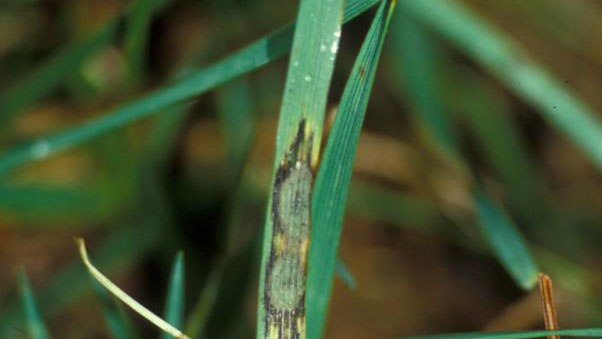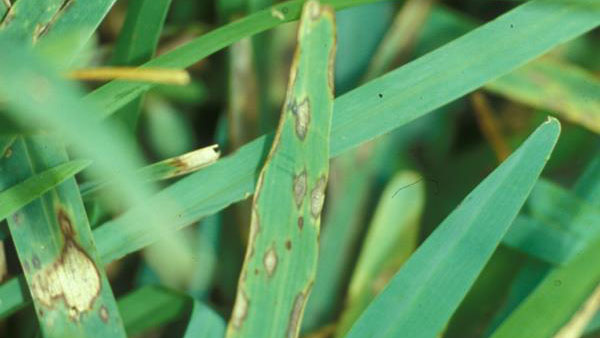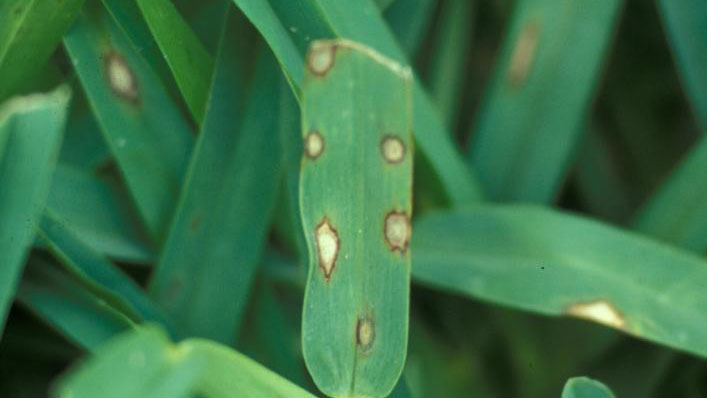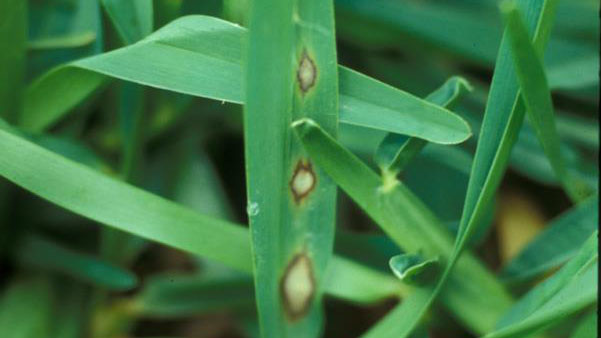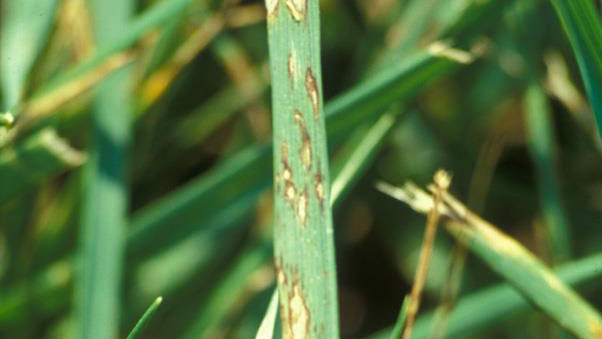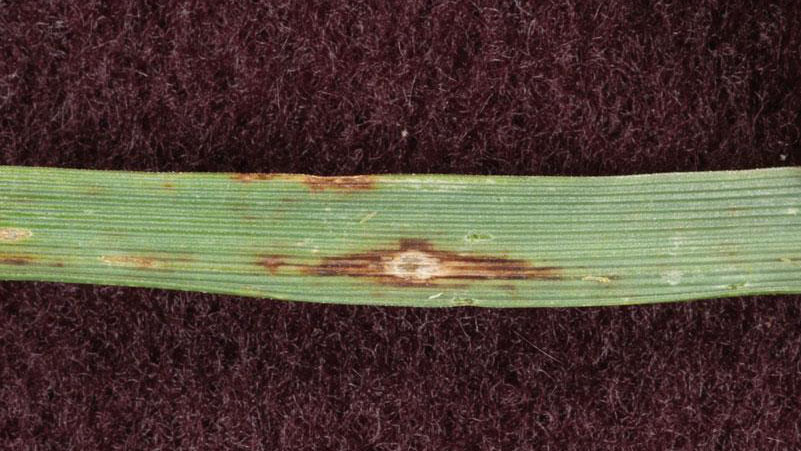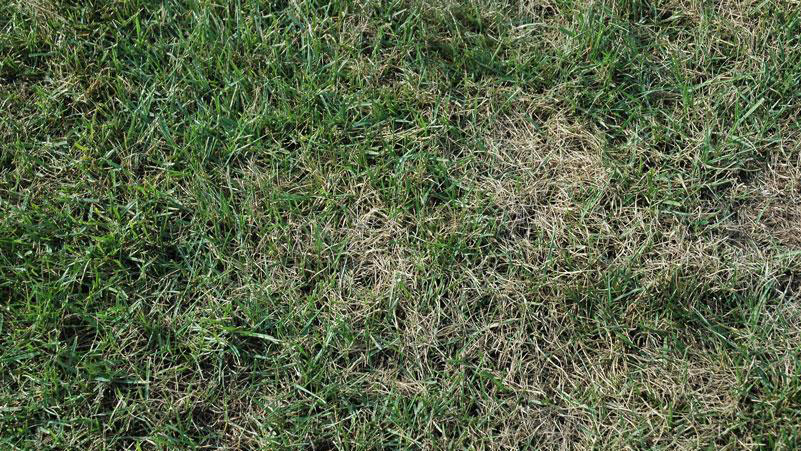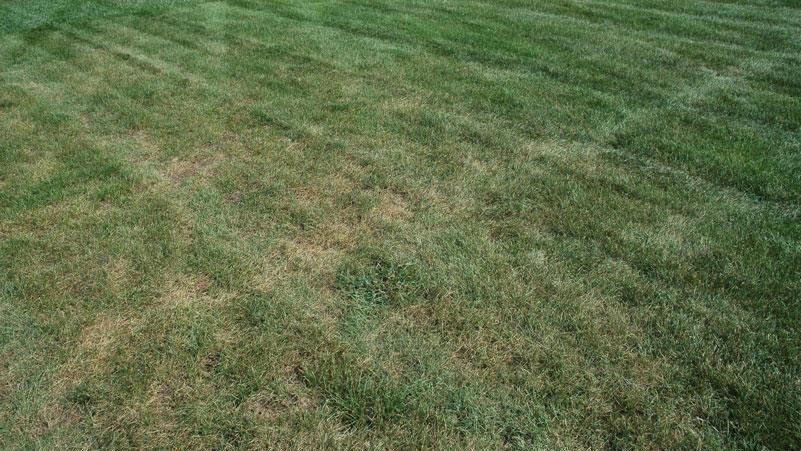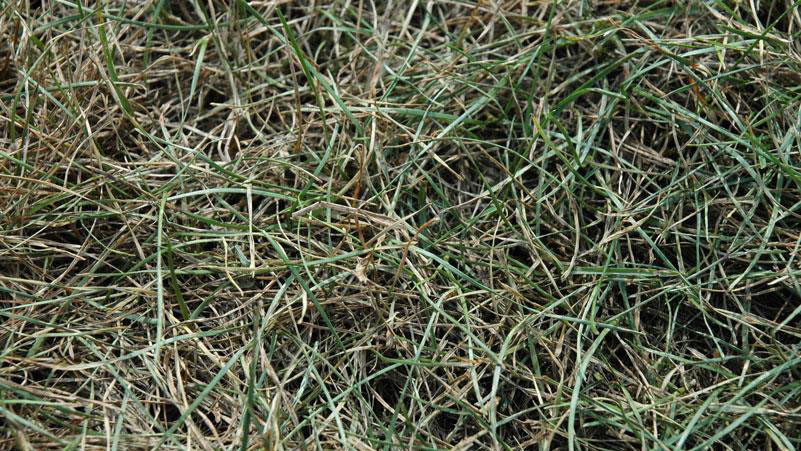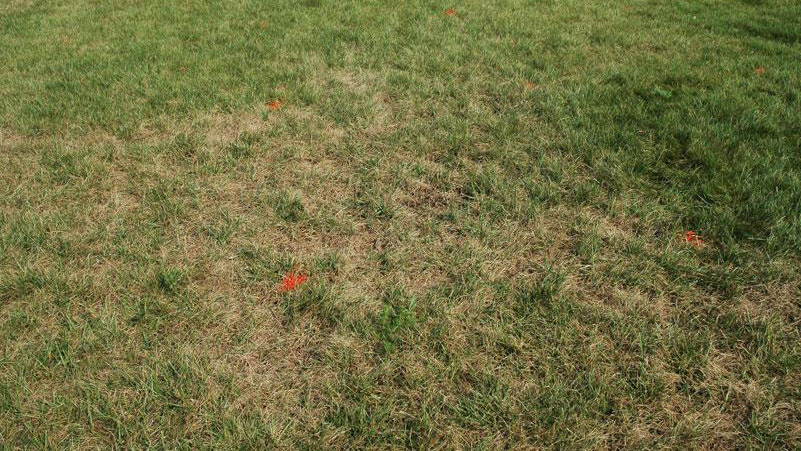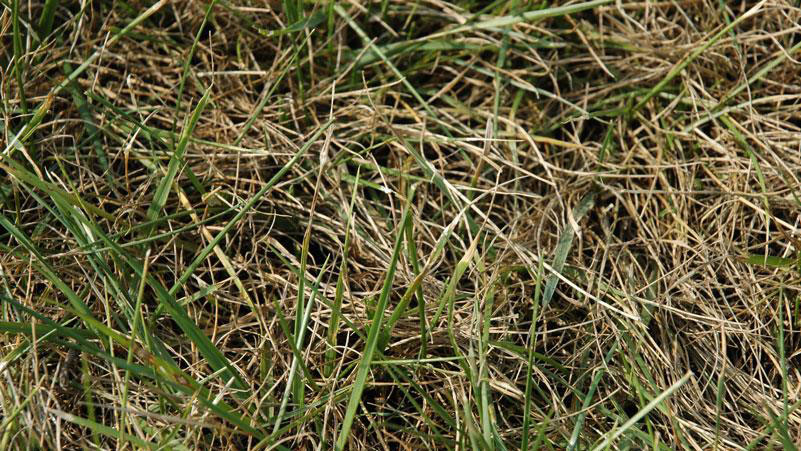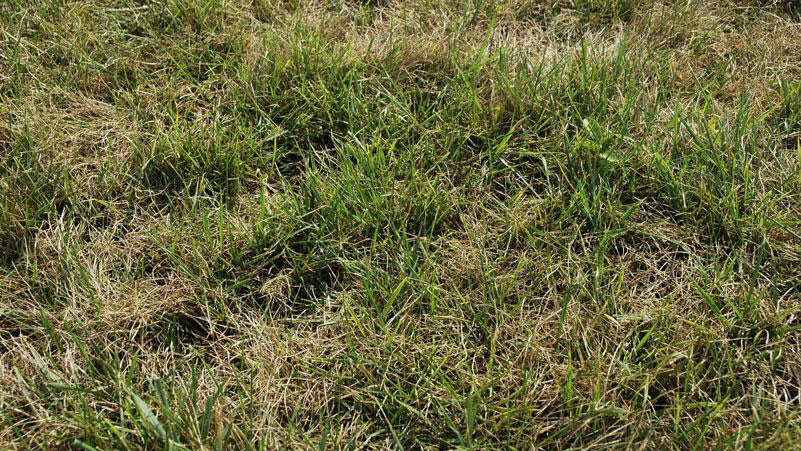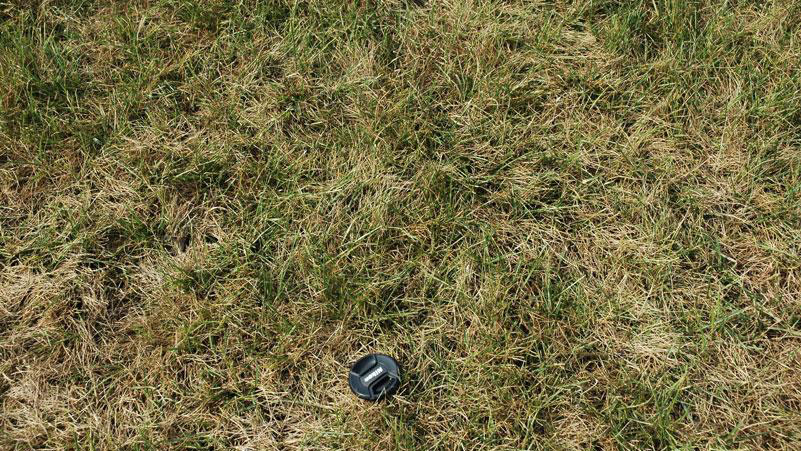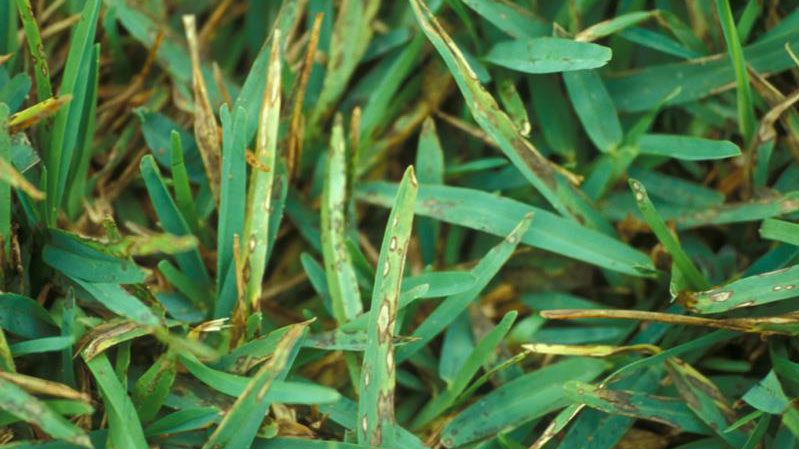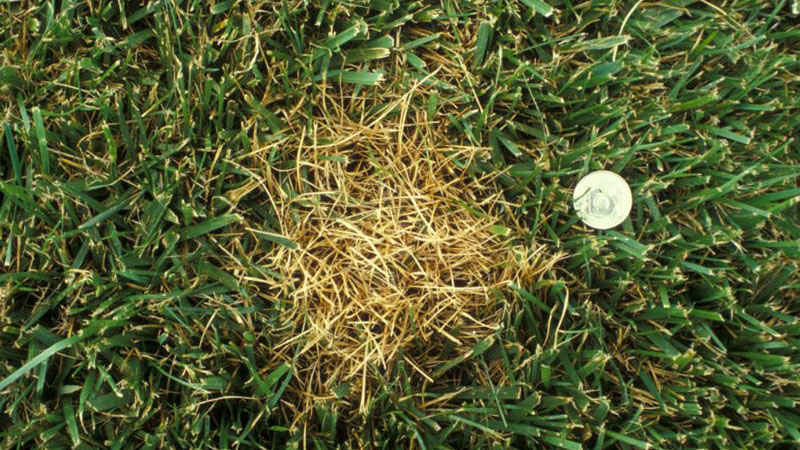Gray Leaf Spot in Turf
en Español / em Português
El inglés es el idioma de control de esta página. En la medida en que haya algún conflicto entre la traducción al inglés y la traducción, el inglés prevalece.
Al hacer clic en el enlace de traducción se activa un servicio de traducción gratuito para convertir la página al español. Al igual que con cualquier traducción por Internet, la conversión no es sensible al contexto y puede que no traduzca el texto en su significado original. NC State Extension no garantiza la exactitud del texto traducido. Por favor, tenga en cuenta que algunas aplicaciones y/o servicios pueden no funcionar como se espera cuando se traducen.
Português
Inglês é o idioma de controle desta página. Na medida que haja algum conflito entre o texto original em Inglês e a tradução, o Inglês prevalece.
Ao clicar no link de tradução, um serviço gratuito de tradução será ativado para converter a página para o Português. Como em qualquer tradução pela internet, a conversão não é sensivel ao contexto e pode não ocorrer a tradução para o significado orginal. O serviço de Extensão da Carolina do Norte (NC State Extension) não garante a exatidão do texto traduzido. Por favor, observe que algumas funções ou serviços podem não funcionar como esperado após a tradução.
English
English is the controlling language of this page. To the extent there is any conflict between the English text and the translation, English controls.
Clicking on the translation link activates a free translation service to convert the page to Spanish. As with any Internet translation, the conversion is not context-sensitive and may not translate the text to its original meaning. NC State Extension does not guarantee the accuracy of the translated text. Please note that some applications and/or services may not function as expected when translated.
Collapse ▲Symptoms
Gray leaf spot initially appears as spots on the leaves that are round or oval, tan in color, and have a dark brown border. When the leaves are wet or humidity is high, the leaf spots turn gray and fuzzy with profuse spore production. In time, the leaf spots expand and girdle the leaf, causing it to die back from the tip. Significant damage to the turf stand may occur as the disease continues to progress. In tall fescue and perennial ryegrass, foliar blighting initially occurs in patches from 4 to 12 inches in diameter that are orange to yellow in color. Like the leaf spots, these patches rapidly coalesce to produce large, irregular areas of damaged turf. The leaves of tall fescue and perennial ryegrass blighted by gray leaf spot are typically matted and greasy in appearance. Because of this symptom, gray leaf spot is often confused with Pythium blight in tall fescue and perennial ryegrass. Gray leaf spot does not develop in distinct patches in St. Augustinegrass, but affected leaves may wither and die, causing a brown cast to the turf that is visible from a distance.
Development Factors
Gray leaf spot is most severe in newly established turfgrass stands. The disease is typically most severe in the first year of establishment, but then gradually becomes less damaging as the turf matures.
Turfgrass hosts vary widely in their susceptibility to damage from gray leaf spot. Perennial ryegrass is most rapidly affected by the disease, with widespread turf loss occurring in a period of a few days. St. Augustinegrass is most resistant, and rarely sustains significant damage if properly managed. Tall fescue has an intermediate level of resistance to gray leaf spot. In St. Augustinegrass, gray leaf spot is most active from June through August. In tall fescue and perennial ryegrass, most cases of the disease appear from late July through September.
Gray leaf spot may develop when temperatures are between 70 and 95°F, but the fungus also requires at least 14 hours of continuous leaf wetness in order to initiate infection. Any factor that increases the amount of leaf wetness will increase gray leaf spot development such as extended periods of cloud cover, improper irrigation timing / frequency, or extended rainfall events. Lush leaf tissue produced by turf that is fertilized with excessive nitrogen is extremely prone to infection by the gray leaf spot pathogen.
Cultural Control
Cultivars of tall fescue and St. Augustinegrass vary considerably in gray leaf spot susceptibility. Perennial ryegrass cultivars with resistance to gray leaf spot are starting to become available. Refer to the results of cultivar evaluation trials operated by the National Turfgrass Evaluation Program or local universities for cultivars with gray leaf spot resistance that perform well in your area.
Managing leaf wetness is an effective means for minimizing gray leaf spot in all hosts. Schedule irrigation early in the morning, before sunrise, and never in the late afternoon or evening. Prune or remove trees, shrubs, or other barriers to increase air movement and sunlight penetration.
Proper mowing practices are most important for gray leaf spot management in St. Augustinegrass. This grass must be mowed frequently during the summer months to remove excess leaf tissue, keep the canopy open and dry, and remove developing gray leaf spot lesions. Collecting clippings reduces spread of the disease when gray leaf spot symptoms are evident. Apply nitrogen and other nutrients as recommended to maintain vigorous foliar growth during the summer months. Excessive shade, in addition to promoting leaf wetness, slows St. Augustinegrass growth and enhances gray leaf spot problems.
Stress of any kind will encourage gray leaf spot development in tall fescue and perennial ryegrass. Proper mowing, fertilization, and irrigation practices will reduce the chances of significant turf loss from this disease. Mow to recommended heights, using the “1⁄3 rule” as a guide for mowing frequency. Collect clippings when gray leaf spot is active to reduce further spread of the disease. Do not apply nitrogen to susceptible grasses in late spring or summer. When establishing a new stand of tall fescue or perennial ryegrass, use recommended seeding rates to encourage rapid maturation of new seedlings.
Chemical Control
Since perennial ryegrass can sustain serious damage in a short period of time, preventative fungicide applications are recommended for gray leaf spot control. A preventative program should be initiated in mid-June or early-July in most locations, with repeat applications on a 14 to 21-day interval. Tall fescue should be monitored frequently for gray leaf spot development so that fungicides can be applied to stop epidemic development. Fungicide resistance to the Qol fungicides (Compass, Fame, Heritage and Insignia) has been documented in gray leaf spot, therefore it is necessary to rotate through multiple chemical classes when managing this disease including the use of tank-mixtures.
* Products marked with an asterisk are not labeled for home lawn use.
| Fungicide and Formulation1 | Amount of Formulation2 | Application Interval (Days)3 | Efficacy Rating | Resistance Risk | FRAC Code4 |
| azoxystrobin (Heritage) WG TL G |
0.2 to 0.4 1 to 2 2 to 4 lbs |
14 to 28 14 to 28 14 to 28 |
+++ | High | 11 |
| azoxystrobin + acibenzolar-S-methyl (Heritage Action)* | 0.2 to 0.4 | 14 to 28 | +++ | High | 11/P01 |
| azoxystrobin + chlorothalonil (Renown)* | 2.5 to 4.5 | 10 to 14 | +++ | Medium | 11/M5 |
| azoxystrobin + difenoconazole (Briskway)* | 0.5 to 1.2 | 14 to 21 | +++ | Medium | 11/3 |
| azoxystrobin + propiconazole (Headway) ME G |
1.5 to 3 2 to 4 lbs |
14 to 28 14 to 28 |
++++ | High | 11/3 |
| azoxystrobin + tebuconazole (Strobe T)* | 0.75 | 1.5 | +++ | High | 11/3 |
|
benzovindiflupyr + difenoconazole (Ascernity)* |
1.0 | 14 | ? | Medium | 7/3 |
|
boscalid + chlorothalonil (Encartis)* |
3 to 4 | 14 | +++ | Medium | 7/M5 |
| chlorothalonil (Daconil Ultrex)* | 1.8 to 3.25 3.7 to 5 |
7 to 10 14 |
+++ | Low | M5 |
| chlorothalonil (Daconil Weather Stik)* | 2 to 3.6 4 to 5.5 |
7 to 10 14 |
+++ | Low | M5 |
| chlorothalonil (Daconil Zn)* | 3 to 5 6 to 8 |
7 to 10 14 |
+++ | Low | M5 |
| chlorothalonil + acibenzolar-S-methyl (Daconil Action)* | 2 to 3.5 4 to 5.4 |
7 to 10 14 |
+++ | Low | M5/P01 |
| chlorothalonil + fluoxastrobin (Fame C)* | 3 to 5.9 | 14 to 28 | ++++ | Medium | M5/11 |
| chlorothalonil + iprodione + thiophanate-methyl + tebuconazole (Enclave)* | 3 to 4 7 to 8 |
14 to 21 28 |
++++ | Low | M5/2/1/3 |
| chlorothalonil + propiconazole (Concert)* | 3 to 5.5 5.5 to 8.5 |
7 to 14 14 to 21 |
+++ | Medium | M5/3 |
| chlorothalonil + propiconazole + fludioxonil (Instrata)* | 2.75 to 6 | 10 to 14 | +++ | Medium | M5/3/12 |
| chlorothalonil + thiophanate-methyl (Spectro)* |
3.72 to 5.76 2 to 8 |
14 14 to 21 |
++++ | Medium | M5/1 |
|
cyazofamid + azoxystrobin (Union) |
2.9 to 5.75 | 14 to 28 | +++ | High | 21/11 |
| fluazinam + tebuconazole (Traction)* | 1.3 | 21 | ? | Medium | 29/3 |
| fluopyram + trifloxystrobin (Exteris Stressgard) | 2.135 to 6 | 14 to 28 | ? | High | 7/11 |
| fluoxastrobin (Fame) | 0.18 to 0.36 | 14 to 28 | +++ | High | 11 |
| fluoxastrobin + tebuconazole (Fame T)* | 0.45 to 0.9 | 21 to 28 | +++ | High | 11/3 |
| flutolanil + thiophanate-methyl (SysStar) | 2 to 3 | 14 | +++ | High | 7/1 |
| flutriafol (Rayora)* | 0.7 to 1.4 | 14 to 21 | +++ | Medium | 3 |
| isofetamid + tebuconazole (Tekken)* | 3 | 14 to 28 | ? | Medium | 7/3 |
| mancozeb (Fore)* (Dithane)* |
8 6.4 to 12.8 |
14 7 to 14 |
+++ | Low | M3 |
| mefentrifluconazole + pyraclostrobin (Navicon)* | 0.7 to 0.85 | 14 to 28 | +++ | Medium | 3/11 |
| metconazole (Tourney) | 0.37 | 14 | ++ | Medium | 3 |
| myclobutanil (Eagle) | 1.2 to 2.4 | 14 | ++ | Medium | 3 |
| propiconazole (Banner MAXX) | 1 to 2 | 14 | ++ | Medium | 3 |
|
prothioconazole (Densicor)* |
0.196 | 14 to 21 | ? | Medium | 3 |
|
pydiflumetofen + azoxystrobin + propiconazole (Posterity XT)* |
1.5 to 3 | 14 to 28 | +++ | Medium | 7/11/3 |
| pyraclostrobin (Insignia) WG SC |
0.5 to 0.9 0.4 to 0.7 |
14 to 28 14 to 28 |
+++ | High | 11 |
| pyraclostrobin + boscalid (Honor)* | 0.55 to 1.1 | 14 to 28 | +++ | High | 11/7 |
| pyraclostrobin + fluxapyroxad (Lexicon Intrinsic) | 0.34 to 0.47 | 14 to 28 | +++ | High | 11/7 |
| tebuconazole (Torque)* (Mirage)* |
0.6 to 1.1 1 to 2 |
21 14 to 28 |
++ | Medium | 3 |
| thiophanate-methyl (3336) (3336 Plus) (3336 G) |
4 to 6 4 to 8 6 to 9 lbs |
14 14 to 28 14 |
++++ | High | 1 |
| triadimefon (Bayleton) | 0.5 to 1 | 14 | ++ | Medium | 3 |
| trifloxystrobin (Compass) | 0.15 to 0.2 0.25 |
14 21 |
++ | High | 11 |
| trifloxystrobin + triadimefon (Armada) (Tartan)* |
0.6 to 1.2 1 to 2 |
14 to 28 14 to 28 |
+++ | High | 11/3 |
| 1 Other trade names with the same active ingredients are labeled for use on turfgrasses and can be used according to label directions. 2 Units are oz, fl oz, or lb depending on formulation. Apply fungicides in 2 to 5 gallons of water per 1,000 square feet according to label directions. Use lower rates for preventive and higher rates for curative applications. 3 Use shorter intervals when conditions are very favorable for disease. 4 Fungicide Resistance Action Committe code. Products with same code have the same mode of action and are in the same chemical class. * Products marked with an asterisk are not labeled for home lawn use. |
|||||
| Efficacy Rating ++++ = excellent control when conditions are highly favorable for disease development +++ = good control when disease pressure is high, excellent control when disease pressure is moderate ++ = good control when disease pressure is moderate, excellent control when disease pressure is low + = good control when disease pressure is low ? = not rated due to insufficient data |
|||||
| Resistance Risk Low = Rotate to different chemical class after 3-4 applications; tank mixing not necessary Medium = Rotate to different chemical class after 1-2 applications; tank-mixing with low or medium risk product recommended High = Rotate to different chemical class after EVERY application; tank-mix with low or medium risk product for EVERY application ? = not rated due to insufficient data |
|||||
Species Data
- HOST SPECIES
- tall fescue, perennial ryegrass, and St. Augustinegrass
Figure 1
- tall fescue, perennial ryegrass, and St. Augustinegrass
- MONTHS WITH SYMPTOMS
- July, August, September
- STAND SYMPTOMS
- FOLIAR SYMPTOMS LOCATION / SHAPE
- FOLIAR SYMPTOMS COLOR
- tan, gray
- ROOT / CROWN SYMPTOMS
- none
- FUNGAL SIGNS
- none or fuzzy spore masses



